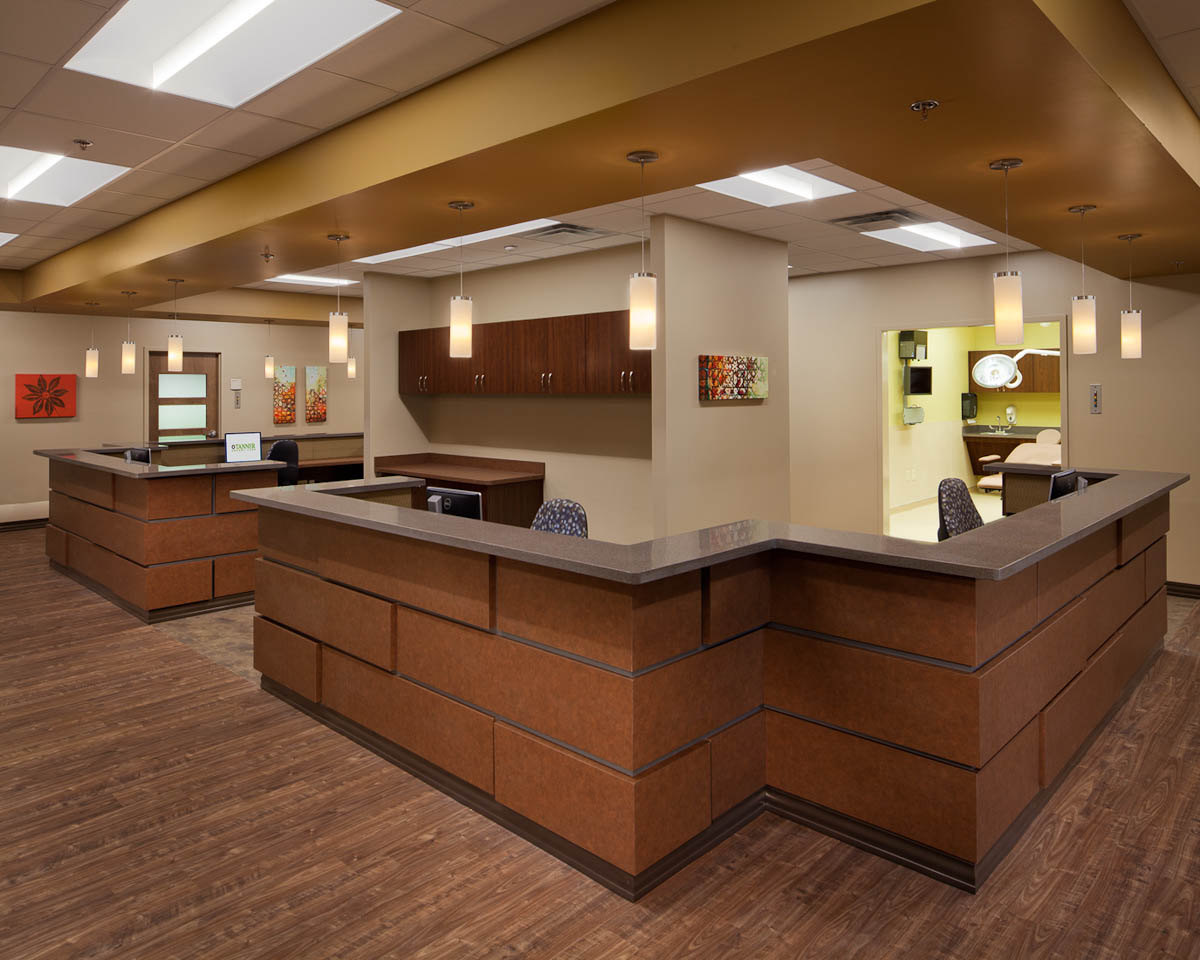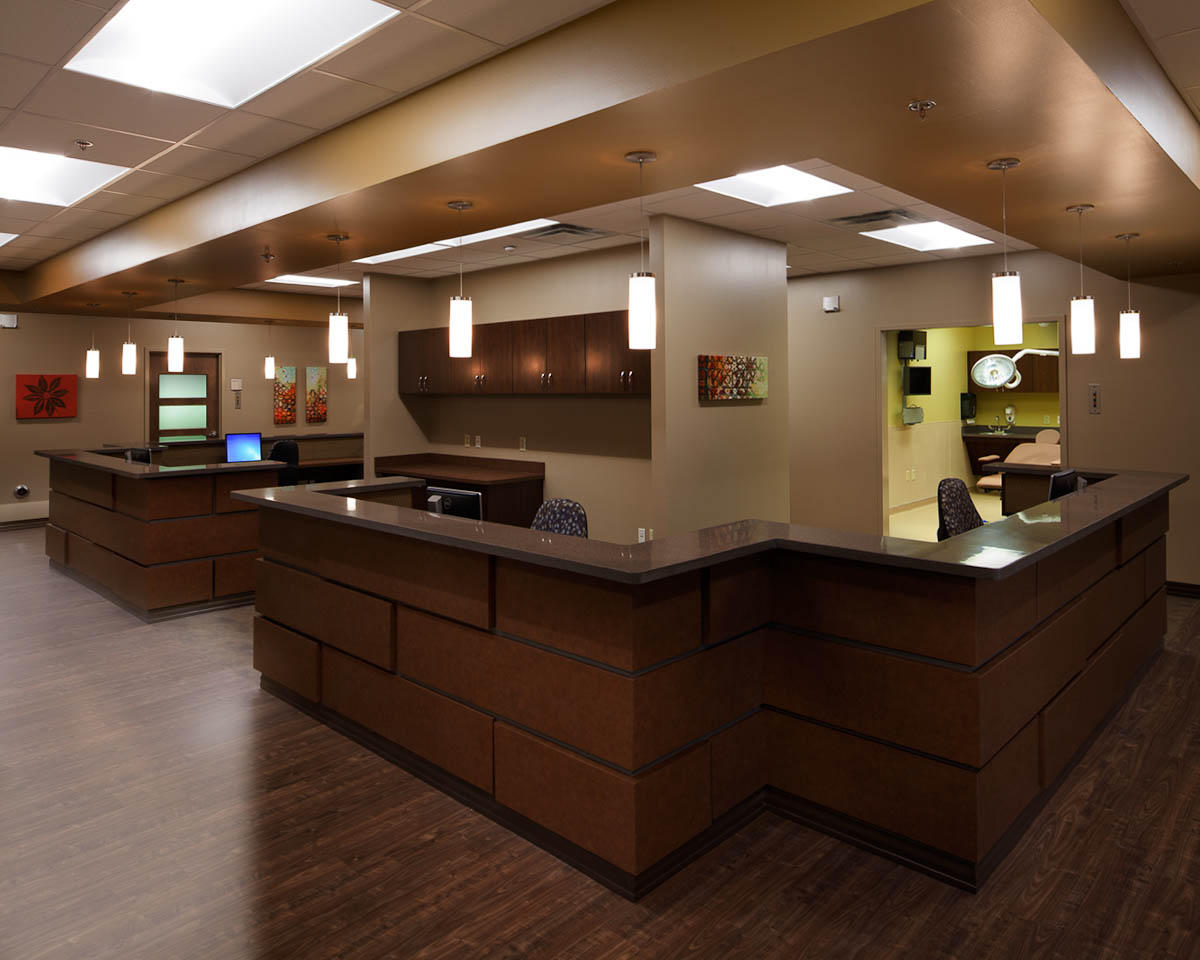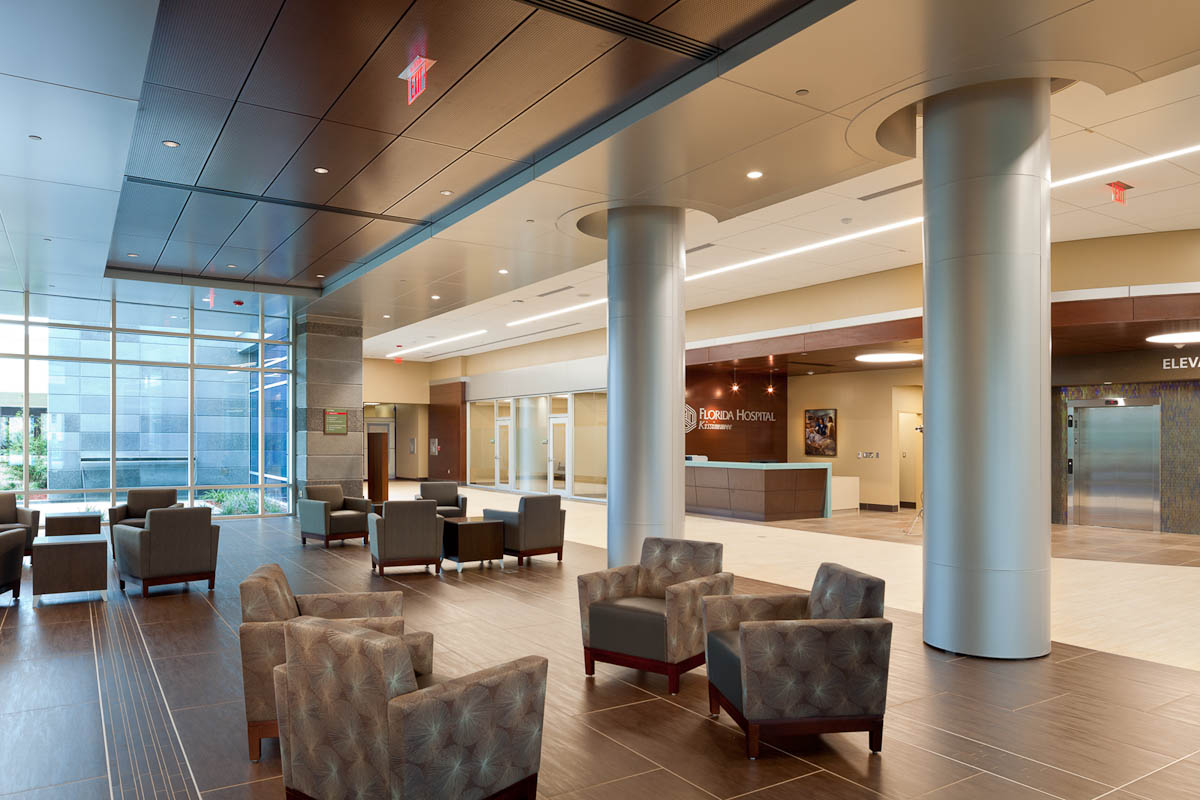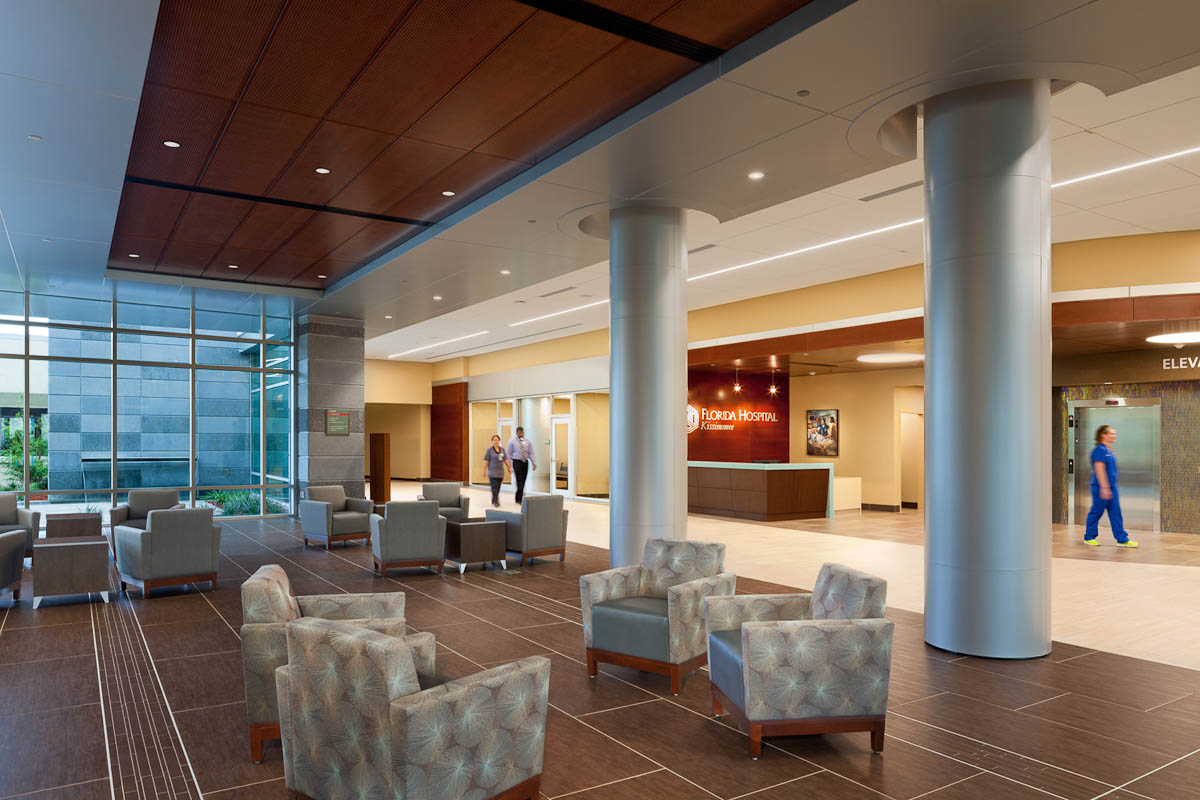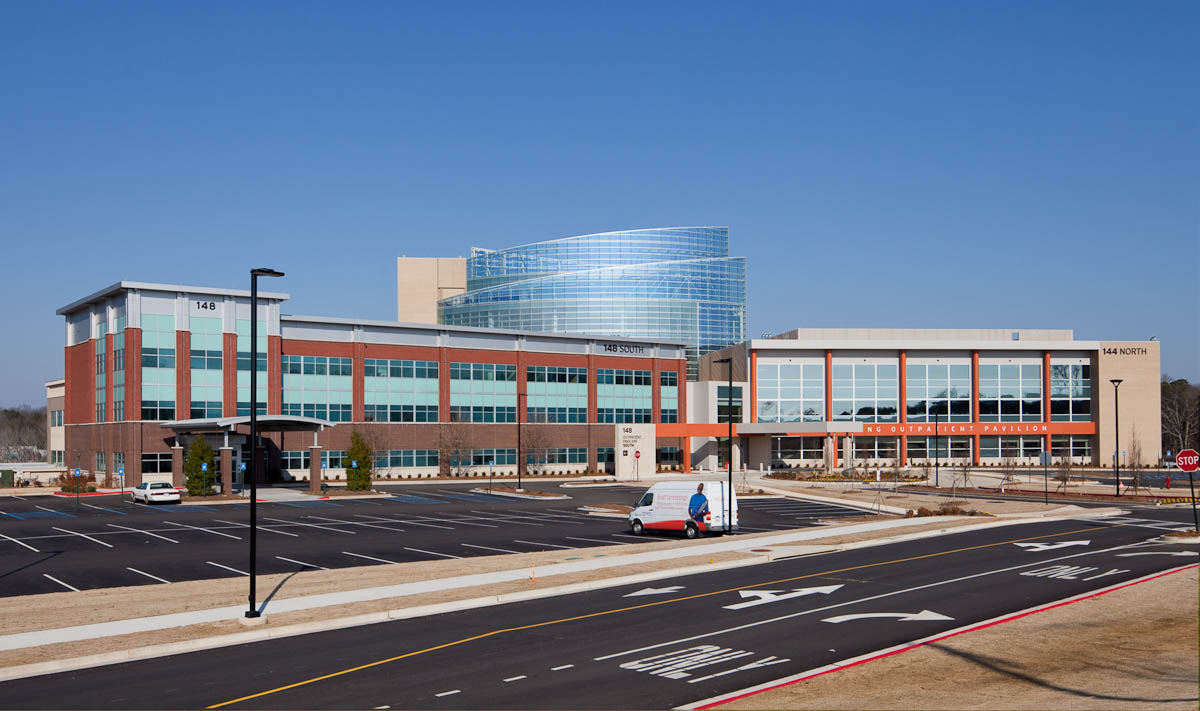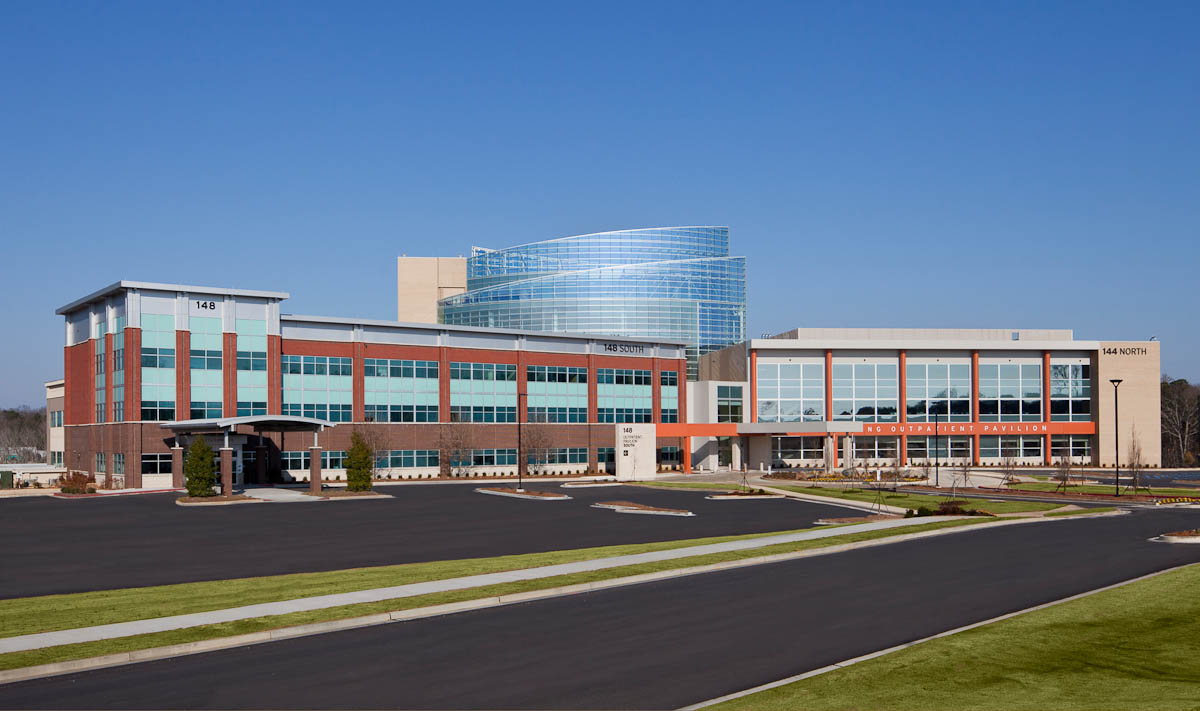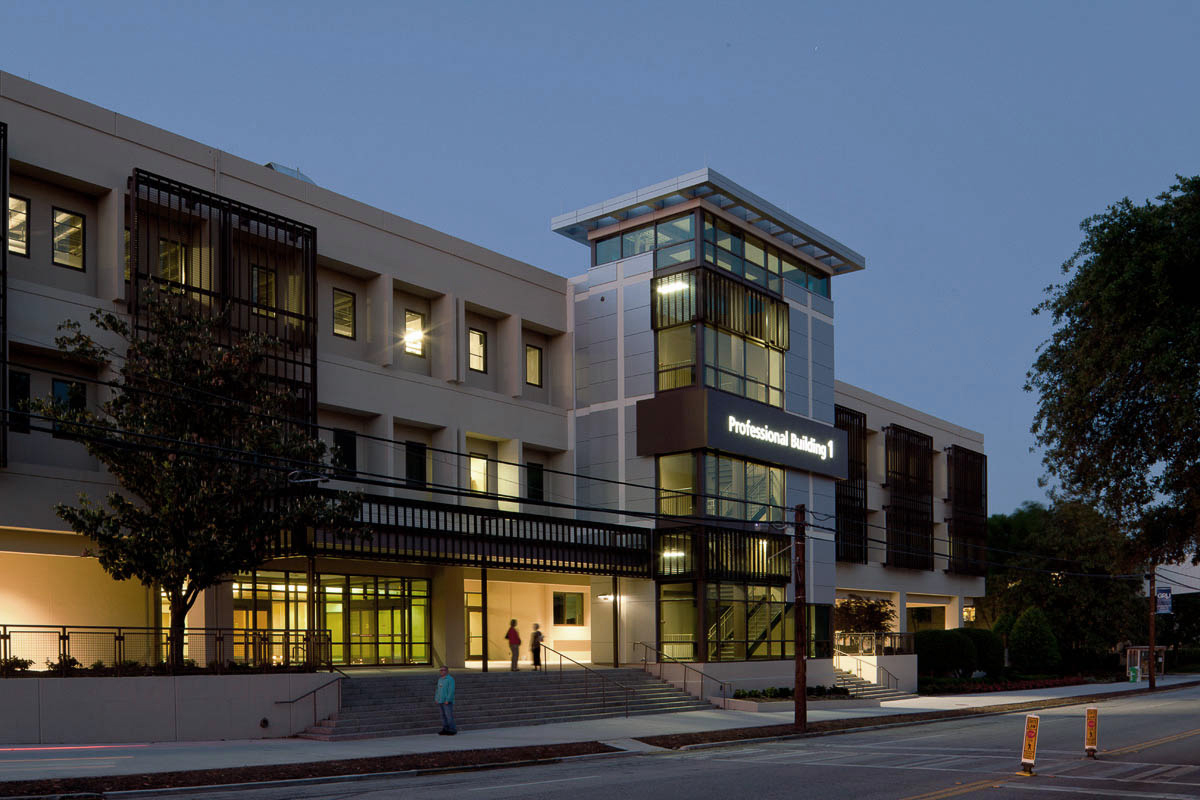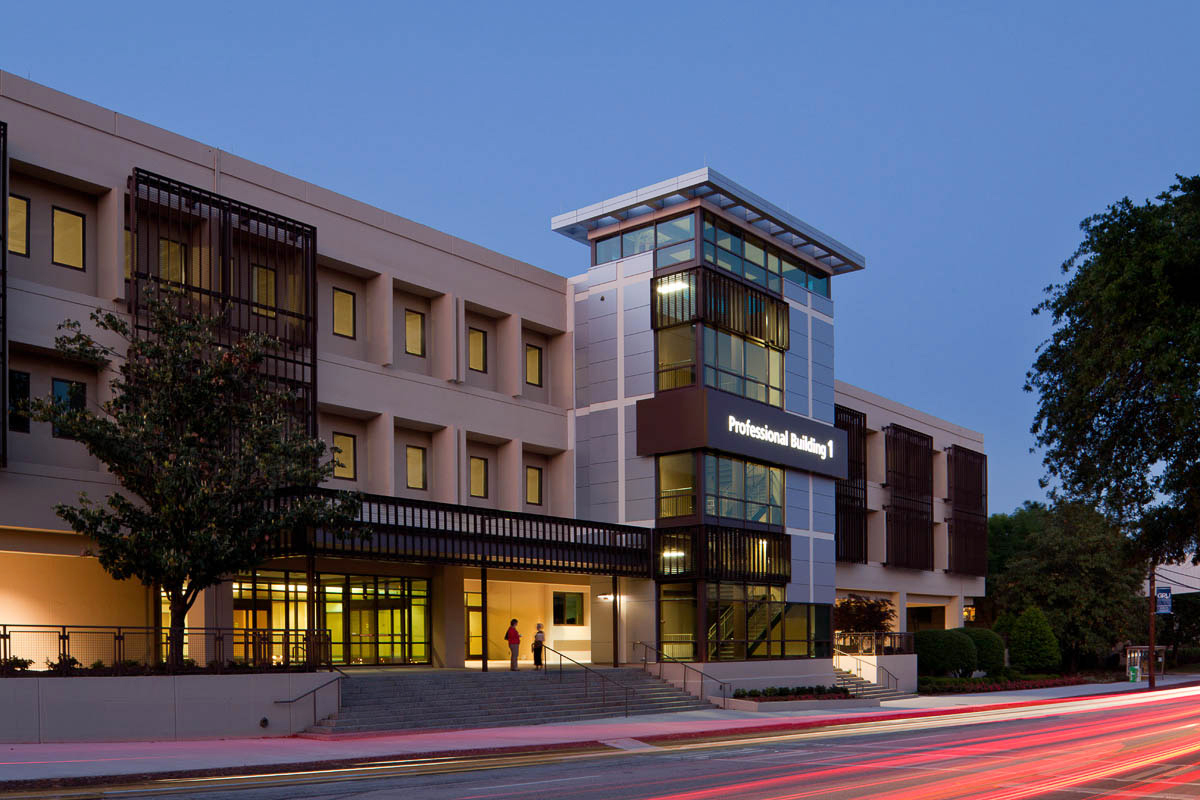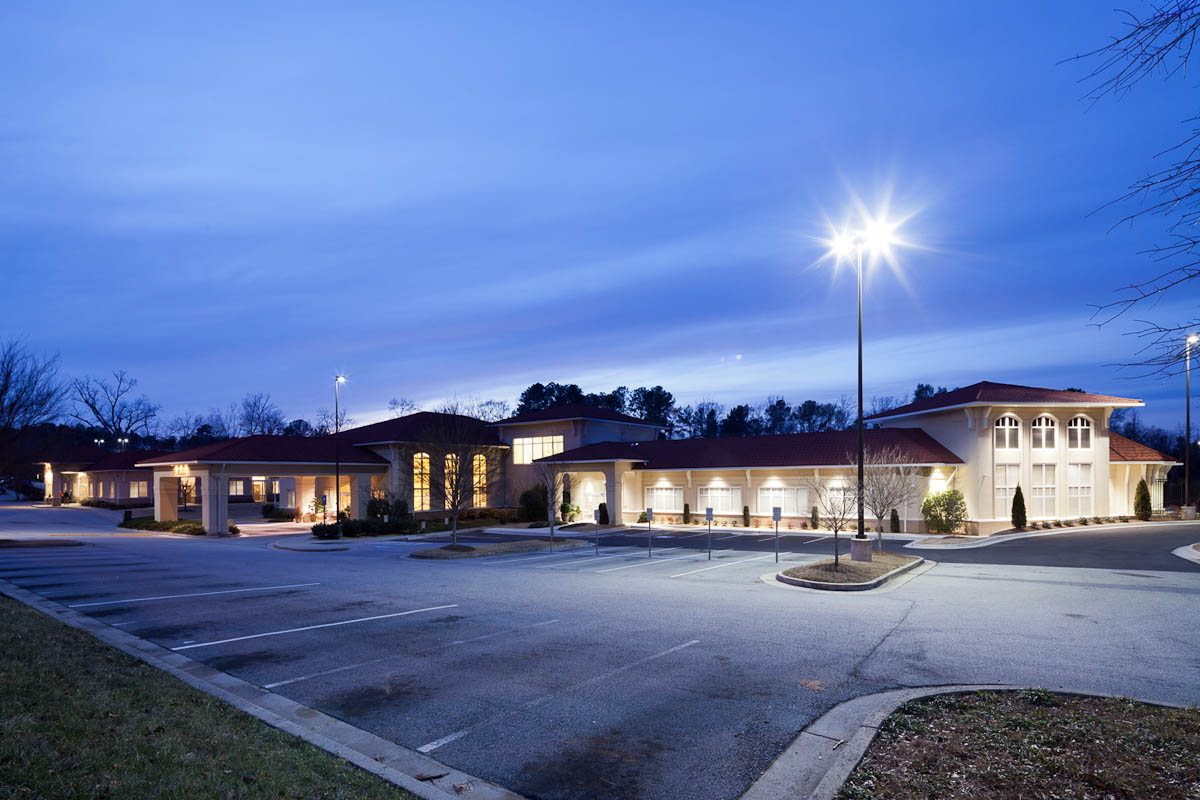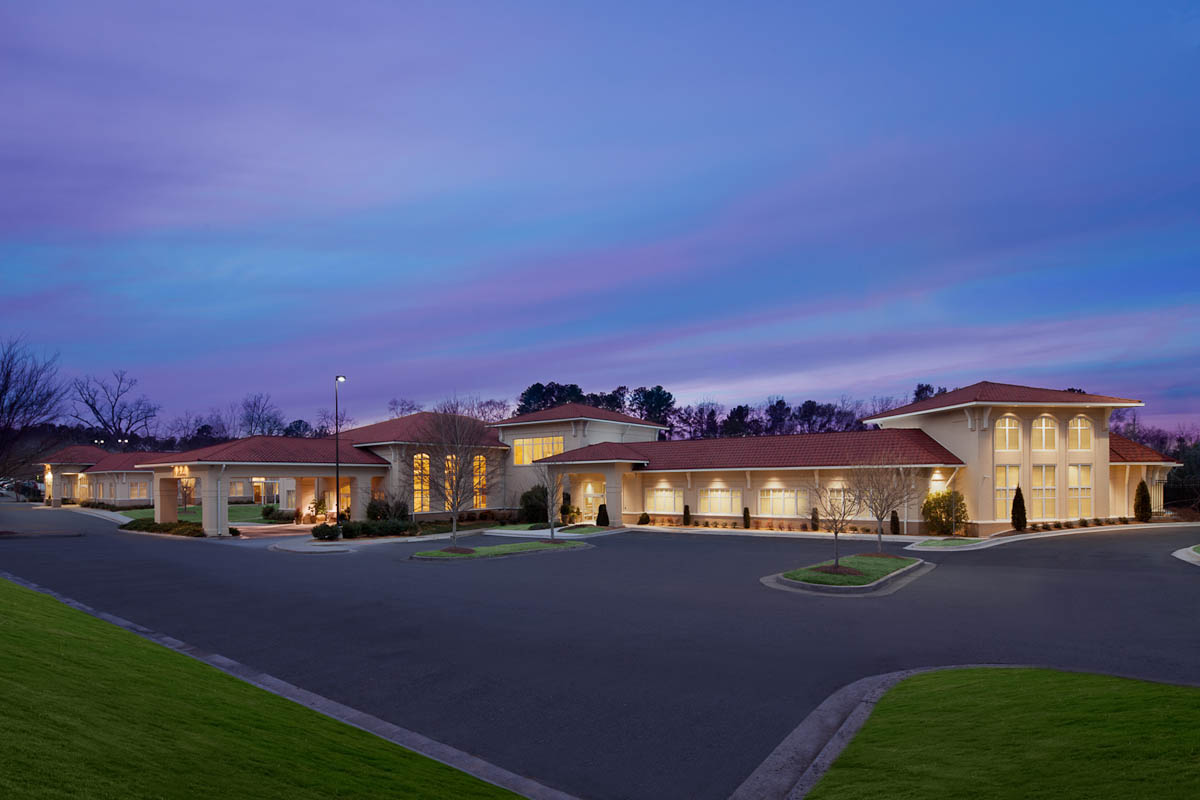How I work
So, straighten the chairs and hit the shutter, right?
Well yes, we will do both those things.
And about a hundred more.
In all photography, the aim is to represent a three dimensional object in a two dimensional medium.
The first step is composition, but we mostly work through control of lighting.
In the classic portrait the photographer is free to make bold moves as dramatic lighting reveals form and shape.
But in architecture, to be faithful to the designer’s vision we must be much more subtle.
The design is the hero, the photographer’s role is to bring clarity.
Here are a few before and after examples of how I work-
The standard interior view
The nurse station looks better to the eye than it does in a simple photograph. Human vision sees a much broader range of light than the camera. What is bright detail to the eye can be blown out to the camera, while darker areas lose texture and detail. Reflections and glare become more obvious in the camera, as do color variations from different light sources. Artwork looks dull and high quality finishes look far from their best.
Most projects present the same challenges. The finished photograph should represent what the eye sees- each finish, color and texture should show at it’s best. A single photograph will rarely accomplish that. Many exposures and lighting modifications are made onsite. Each element is judged and refined individually during photography and again in post production. You will never get there with any HDR plug-in, but the end result is worth it.
A big space with mixed lighting
Large lobbies with mixed lighting are always interesting.
Composition begins by selecting a camera angle based on the immovable items in the picture. Placement of furniture and people is planned for balance and to show scale and flow. Then lighting is addressed.
High quality glossy surfaces do not read well with glare and reflections. But we want to show the natural light flooding the waiting area. Significant lighting modifications allowed glossy surfaces retain some shine but color and texture are clean and clear. While the eye will compensate for differences in color and brightness of light sources, the camera does not. In the finished view fabrics and surfaces have true color and texture while the overall view has much greater depth. This is achieved through captures onsite, there is relatively little post production work involved.
A little bit of retouching
We had known for weeks what day the exterior would be ready to photograph, the Sunday morning before the facility opened. The day before construction was still going on, the day after it would be a sea of cars. So our one opportunity dawned bright and clear and I was in high spirits driving out to the site. I already knew I would be retouching landscaping and the parking lot. Unfortunately not quite everybody got the email about keeping the parking lot clear. Yes, vans are more difficult to take out.
When nobody has a key
The out of town assignment often allows only one opportunity for a twilight view. An unexpected hitch made it impossible in the time available to gain access to the unbuilt spaces upstairs. The ugly window lighting was refined in post production to give the appearance of semi-opaque window blinds. Power poles and cables were removed and traffic streaks added life to the street.
A warm exterior view in Winter
The client has a consistent theme for warm and welcoming twilight views. In this view we wanted to continue that mood with a more welcoming view than a cold January evening would allow. Window and exterior lighting were modified, along with extensive improvement to landscape and parking lot. Multiple exposures onsite allow precise control over the different elements in the photograph. The grass that was added in the foreground came from an identical slope photographed in similar conditions.
All images on this site are copyright Kieran Reynolds.
Images may not be copied, saved, shared or reproduced in any way without prior written permission.
